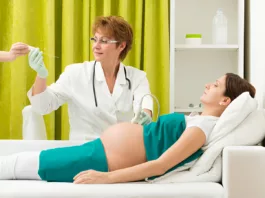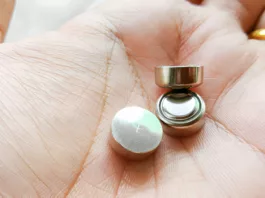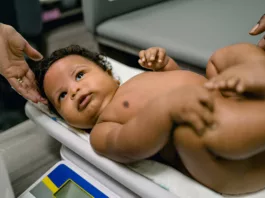What is Bowel Endometriosis?
Endometriosis occurs when tissue similar to the lining of the uterus (endometrial tissue) grows outside the uterus. This tissue is commonly found in the ovaries, where it can form cysts, but it can also appear in other areas, such as the Fallopian tubes and intestines, and occasionally in more distant locations like the lungs, heart lining, or central nervous system.1Tsamantioti ES, Mahdy H. Endometriosis. [Updated 2023 Jan 23]. In: StatPearls [Internet]. Treasure Island (FL): StatPearls Publishing; 2023 Jan-. Available from: https://www.ncbi.nlm.nih.gov/books/NBK567777/ When endometriosis affects the intestines, it’s called Bowel Endometriosis. It can cause pain in the pelvic area, especially during a woman’s period. It’s the most common reason for long-lasting pelvic pain in women.2Bulun SE, Yilmaz BD, Sison C, et al. Endometriosis. Endocr Rev. 2019;40(4):1048-1079. doi:10.1210/er.2018-00242 Endometriosis can also make it harder for women to get pregnant.
How common is Bowel Endometriosis?
Bowel endometriosis affects a range of 3% to 37% of women with endometriosis. The most common places it shows up are in the rectosigmoid colon (70-93%), where the small and large intestines meet (ileocecal region), the appendix, and other parts of the colon and small intestine. Usually, endometriosis in the intestines doesn’t cause any symptoms. People often find out they have it when they have surgery for something else.3Sánchez Cifuentes Á, Candel Arenas MF, Albarracín Marín-Blázquez A. Intestinal endometriosis. Our experience. Rev Esp Enferm Dig. 2016;108(8):524-525. doi:10.17235/reed.2016.4292/2016
Causes of Bowel Endometriosis
The exact cause of Bowel endometriosis is unclear. Popular theories that attempt to explain the condition include:
- You may have a genetic predisposition to the condition, i.e., it runs in your family
- Cells may be transplanted away from the uterus via the lymphatic system or your blood circulation to other organs.
- Endometrial cells may implant in your intestine by traveling in reverse from your uterus via retrograde menstruation.4Vercellini P, Viganò P, Somigliana E, Fedele L. Endometriosis: pathogenesis and treatment. Nat Rev Endocrinol. 2014;10(5):261-275. doi:10.1038/nrendo.2013.255
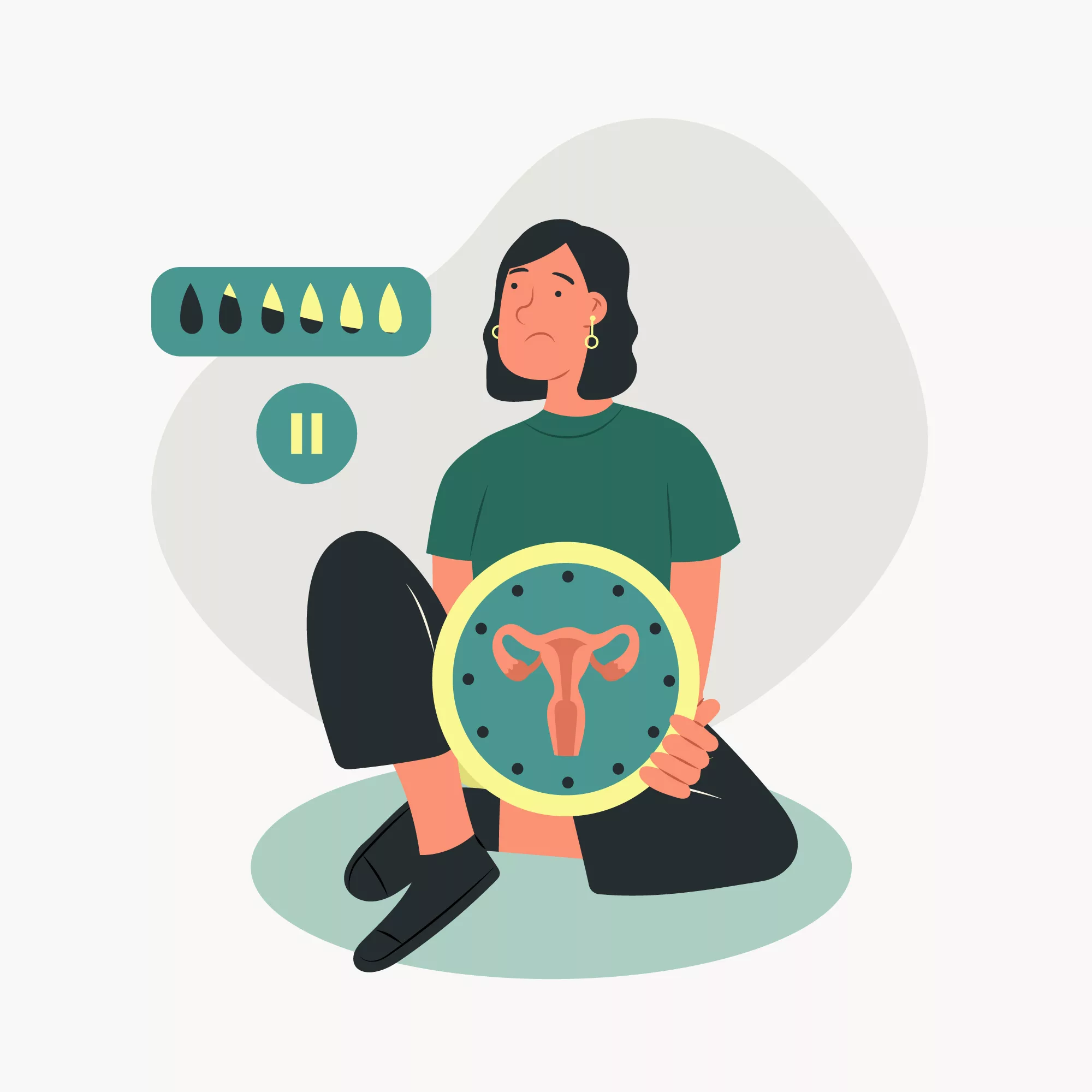
Symptoms of Bowel Endometriosis
As endometrial tissue grows inside or on the surface of your intestines, it may cause the following bowel endometriosis symptoms:
- You may feel blocked up, gassy, or constipated.
- You may have pain in your lower back or pelvic area and frequent tummy aches.
- You may feel pain during sex.
- You will not be able to get pregnant (infertility).
- You may see blood from your rectum when you have your period.
- You feel extreme pain when you poop.
Sometimes, people mistake bowel endometriosis symptoms for irritable bowel syndrome (IBS) because they have similar signs like stomach pain. But the difference is how often and how bad the pain is. With IBS or other belly problems, the pain might happen a few times a week throughout the month, but with bowel endometriosis, the pain is really intense and mainly during your period.5What is Bowel Endometriosis? | Patient Care. weillcornell.org. https://weillcornell.org/news/what-is-bowel-endometriosis
If your bowel endometriosis also involves the pelvis, then there may also be symptoms like 6 Ferrero S, Camerini G, Leone Roberti Maggiore U, Venturini PL, Biscaldi E, Remorgida V. Bowel endometriosis: Recent insights and unsolved problems. World J Gastrointest Surg. 2011;3(3):31-38. doi:10.4240/wjgs.v3.i3.31
- Premenstrual and menstrual pain
- Heavy bleeding during or between periods
- Fatigue and Nausea
- Frequent episodes of diarrhea.
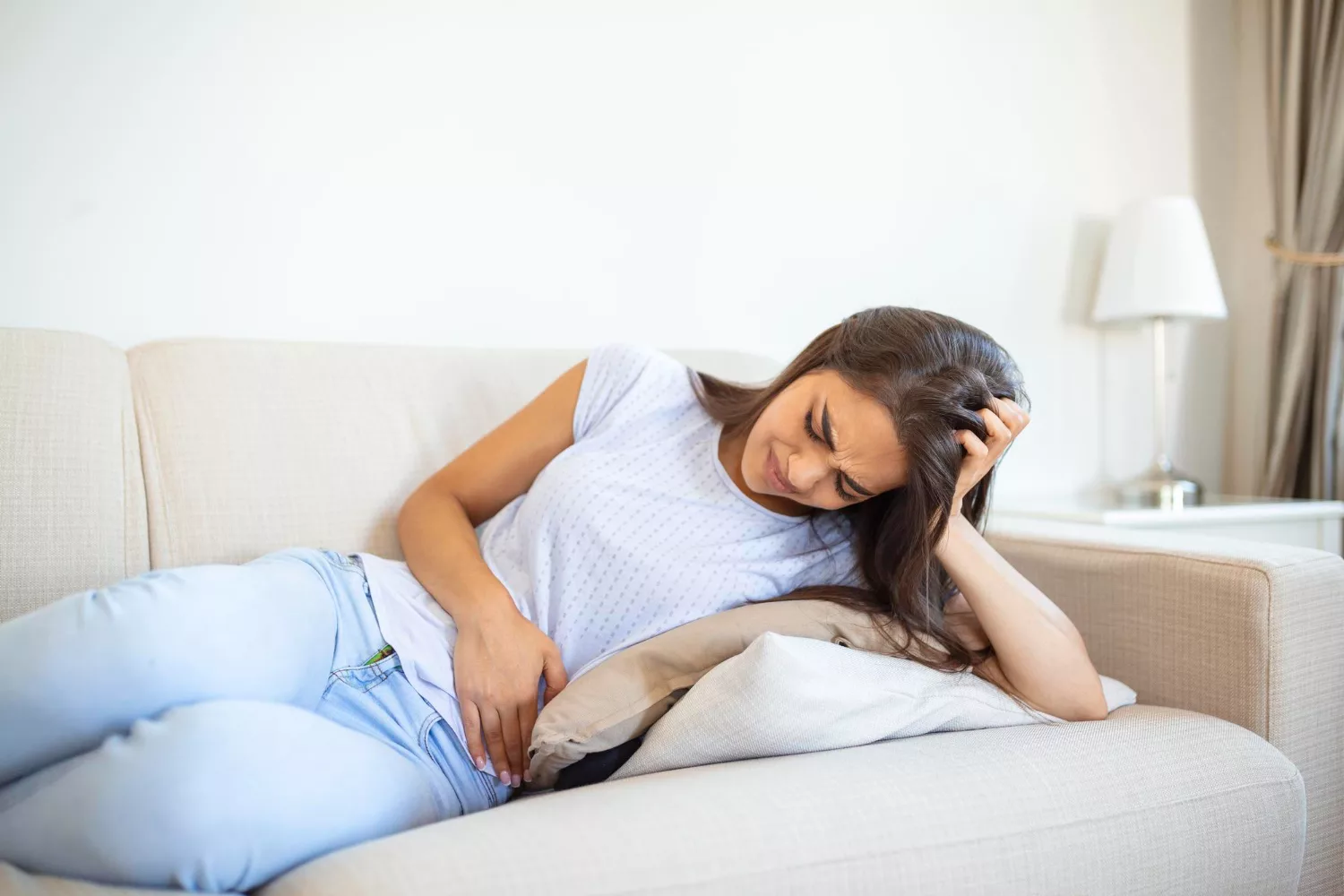
How is Bowel endometriosis Diagnosed?
Once your doctor has examined you and considered your symptoms, they might want to do some tests to get a clearer picture of what’s going on. These tests could include:
- Ultrasound exams use sound waves to create pictures of the inside of your body. They put a device called a transducer either in your vagina or rectum to see the size and location of the endometriosis.
- MRI is a special scan that uses strong magnets to make detailed images. It can find endometriosis in your pelvic area, including your bowel.
- Barium Enema is an X-ray test that focuses on your colon and rectum. Before the X-ray, you’ll drink a white liquid called barium. It helps the doctor see the affected area more clearly.
- Bowel Endometriosis Colonoscopy is when a doctor uses a long, flexible tube with a camera called a colonoscope to look inside your intestines. They put it in through your bottom. While colonoscopy can’t directly diagnose bowel endometriosis, it can help rule out colon cancer, which has similar symptoms.
- Laparoscopy is a therapeutic and diagnostic procedure where the doctor makes small cuts in your belly and puts it in a small tube with a light. It helps the doctor find and check for endometriosis in your belly and pelvis. Sometimes, they might take tiny pieces of tissue to test. You’ll be asleep with anesthesia during the whole surgery.
Bowel endometriosis can also be diagnosed with high specificity using endoscopic ultrasound-guided fine needle aspiration. In this procedure, an endoscope is used to aspirate some samples of the suspected tissue. These samples can be used for histological confirmation of the disease.7Carvalho AC, Cardoso R, Pires F, et al. Diagnosis of Bowel Endometriosis Using Endoscopic Ultrasound-guided Fine Needle Aspiration. Korean J Gastroenterol. 2023;81(1):46-51. doi:10.4166/kjg.2022.104
What are Bowel Endometriosis Treatment Options?
It can be managed through a combination of medication and surgery. In asymptomatic cases, treatment may not be necessary. Your doctor will decide on medical or surgical management after looking at how severe your case is and the location of endometriosis.
You don’t have to pick only medicine or surgery for treatment. It’s better to combine them. This means using medicine for a long time and having surgery when needed. The reason for trying medicine first is to see if it can improve your symptoms without needing surgery. After surgery, you can go back to using medicine to prevent the disease from coming back, especially if you want to get pregnant later on.8Habib N, Centini G, Lazzeri L, et al. Bowel Endometriosis: Current Perspectives on Diagnosis and Treatment. Int J Womens Health. 2020;12:35-47. Published 2020 Jan 29. doi:10.2147/IJWH.S190326
Medical Treatments for Endometriosis
If you can’t have surgery or don’t want it, then medicine is the first choice for treating bowel endometriosis. It will help you control the symptoms and prevent the need for more surgeries. If you go for medicine, you should know that you might have to take it for a long time until you want to have a baby or reach menopause. Different medications are available now that work by reducing certain hormones and can help manage bowel endometriosis.9Habib N, Centini G, Lazzeri L, et al. Bowel Endometriosis: Current Perspectives on Diagnosis and Treatment. Int J Womens Health. 2020;12:35-47. Published 2020 Jan 29. doi:10.2147/IJWH.S190326
- Birth control methods like pills, patches, or rings.
- Progestin injections.
- Gonadotropin-releasing hormone (GnRH) agonists
- For pain relief, your doctor may suggest over-the-counter or prescription nonsteroidal anti-inflammatory drugs (NSAIDs) like ibuprofen.
Surgical Management
The main treatment for bowel endometriosis is surgery. Removing the tissue causing the problem helps reduce pain and make your life better. There are different types of surgeries available to treat the condition. Surgeons can do them by making one big cut (laparotomy) or several small cuts (laparoscopy). The choice depends on the size and location of the affected areas.
Segmental Bowel Resection
This surgery treats larger areas (patients with nodules greater than 3 cm in diameter). Your surgeon will remove the affected part of your intestine. They will then reconnect the remaining pieces through re-anastomosis. Over half of the women who undergo this procedure can conceive afterward. Resection reduces the likelihood of endometriosis recurrence compared to other methods.
Rectal Shaving
Rectal shaving works well for smaller lesions, usually less than 3 cm. In this procedure, surgeons “shave” off the lesion from the affected muscular layer of the bowel wall, specifically the mucosa, while aiming to avoid entering the bowel lumen. Rectal shaving is linked to lower rates of perioperative complications and a reduced likelihood of experiencing long-term bladder and bowel dysfunctions after the surgery.10Chou D, Perera S, Condous G, et al. Shaving for Bowel Endometriosis. J Minim Invasive Gynecol. 2020;27(2):268-269. doi:10.1016/j.jmig.2019.11.012
Disc Resection
Disc resection is the preferred approach to treat bowel endometriosis for patients with severe pain who have either failed medical treatment or have contraindications to hormonal treatment and who have a single bowel lesion <3 Cm involving the inner muscularis.11Fernandes LF, Bassi MA, Abrão MS. Surgical Principles for Disc Resection of Deep Bowel Endometriosis. J Minim Invasive Gynecol. 2020;27(2):262. doi:10.1016/j.jmig.2019.07.021 During disc resection, the surgeon removes the affected portion of the bowel where the endometriosis lesion is located. The procedure focuses on excising the “disc” of tissue that includes the endometriosis while preserving as much surrounding healthy bowel tissue as possible. After the removal, the surgeon sutures the bowel to restore continuity.
Can Bowel Endometriosis occur after Menopause?
Endometriosis is not very common in women after menopause, and it’s estimated to affect around 2-4% of them. Some experts believe that hormone replacement therapy (HRT) can make existing endometriosis come back or even cause new growth in women who have endometriosis before reaching menopause. However, there has been a reported case of post-menopausal bowel endometriosis in a woman on HRT with no previous history of the condition.12Jeon DS, Kim TH, Lee HH, Byun DW. Endometriosis in a postmenopausal woman on hormonal replacement therapy. J Menopausal Med. 2013;19(3):151-153. doi:10.6118/jmm.2013.19.3.151
Conclusion
Bowel endometriosis is a type of endometriosis involving the Intestines. It can cause significant pain and discomfort. The exact cause of the disease is not known. A health provider can make a diagnosis using a variety of modalities. Prompt diagnosis and appropriate management through medication and surgical interventions can help alleviate symptoms and improve the quality of life for individuals affected by this condition.
Refrences
- 1Tsamantioti ES, Mahdy H. Endometriosis. [Updated 2023 Jan 23]. In: StatPearls [Internet]. Treasure Island (FL): StatPearls Publishing; 2023 Jan-. Available from: https://www.ncbi.nlm.nih.gov/books/NBK567777/
- 2Bulun SE, Yilmaz BD, Sison C, et al. Endometriosis. Endocr Rev. 2019;40(4):1048-1079. doi:10.1210/er.2018-00242
- 3Sánchez Cifuentes Á, Candel Arenas MF, Albarracín Marín-Blázquez A. Intestinal endometriosis. Our experience. Rev Esp Enferm Dig. 2016;108(8):524-525. doi:10.17235/reed.2016.4292/2016
- 4Vercellini P, Viganò P, Somigliana E, Fedele L. Endometriosis: pathogenesis and treatment. Nat Rev Endocrinol. 2014;10(5):261-275. doi:10.1038/nrendo.2013.255
- 5What is Bowel Endometriosis? | Patient Care. weillcornell.org. https://weillcornell.org/news/what-is-bowel-endometriosis
- 6Ferrero S, Camerini G, Leone Roberti Maggiore U, Venturini PL, Biscaldi E, Remorgida V. Bowel endometriosis: Recent insights and unsolved problems. World J Gastrointest Surg. 2011;3(3):31-38. doi:10.4240/wjgs.v3.i3.31
- 7Carvalho AC, Cardoso R, Pires F, et al. Diagnosis of Bowel Endometriosis Using Endoscopic Ultrasound-guided Fine Needle Aspiration. Korean J Gastroenterol. 2023;81(1):46-51. doi:10.4166/kjg.2022.104
- 8Habib N, Centini G, Lazzeri L, et al. Bowel Endometriosis: Current Perspectives on Diagnosis and Treatment. Int J Womens Health. 2020;12:35-47. Published 2020 Jan 29. doi:10.2147/IJWH.S190326
- 9Habib N, Centini G, Lazzeri L, et al. Bowel Endometriosis: Current Perspectives on Diagnosis and Treatment. Int J Womens Health. 2020;12:35-47. Published 2020 Jan 29. doi:10.2147/IJWH.S190326
- 10Chou D, Perera S, Condous G, et al. Shaving for Bowel Endometriosis. J Minim Invasive Gynecol. 2020;27(2):268-269. doi:10.1016/j.jmig.2019.11.012
- 11Fernandes LF, Bassi MA, Abrão MS. Surgical Principles for Disc Resection of Deep Bowel Endometriosis. J Minim Invasive Gynecol. 2020;27(2):262. doi:10.1016/j.jmig.2019.07.021
- 12Jeon DS, Kim TH, Lee HH, Byun DW. Endometriosis in a postmenopausal woman on hormonal replacement therapy. J Menopausal Med. 2013;19(3):151-153. doi:10.6118/jmm.2013.19.3.151


